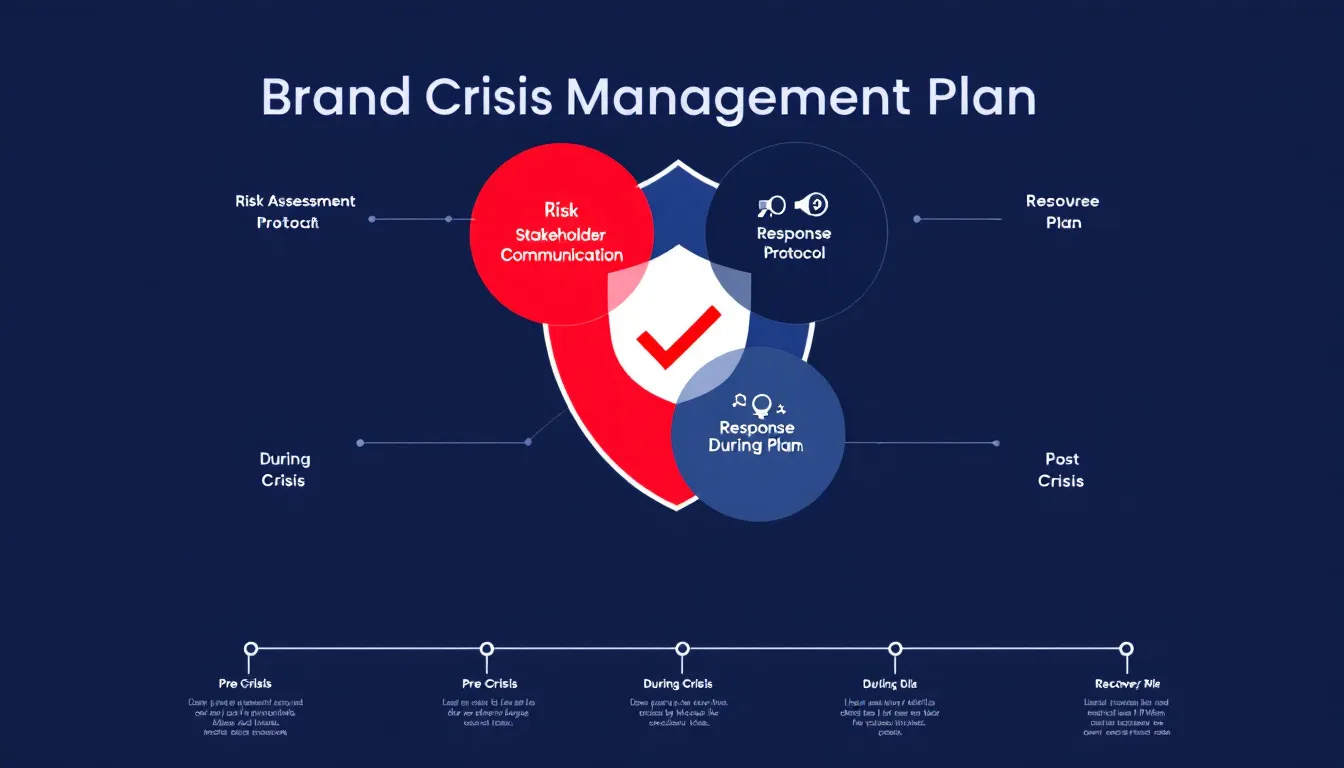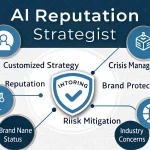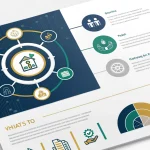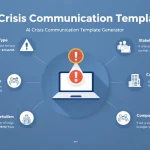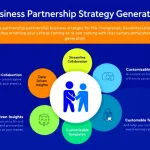Is this tool helpful?
How to Use the Tool Effectively
Follow these simple steps to generate a thorough brand crisis management plan tailored to your company’s needs:
-
Company Name: Enter your company’s full legal name. Examples:
- BrightFuture Energy LLC
- Urban Health Partners
-
Potential Risks: Clearly list specific risks your business faces. Use precise descriptions, for example:
- Regulatory non-compliance leading to fines
- Negative social media campaigns
- IT system failures causing downtime
- Manufacturing defects resulting in recalls
-
Key Stakeholders: Identify people or groups affected by crises, such as:
- Investors and board members
- Employees across departments
- Suppliers and vendors
- Customers and client groups
- Regulatory agencies
-
Industry Type: Specify your sector to receive precise recommendations. For example:
- Renewable Energy
- Financial Services
- Previous Crises: Optionally, describe earlier crises and how you responded. This helps refine your plan’s effectiveness.
Introduction to the Brand Crisis Management Plan Generator
This tool creates a detailed brand crisis management plan that helps you safeguard your company’s reputation during challenging situations. By providing specific business details and risks, you receive a customized strategy to handle potential crises effectively and efficiently.
A well-prepared crisis management plan helps you identify vulnerabilities, communicate with key stakeholders, and execute response actions swiftly. Using this tool increases your readiness, protects stakeholder trust, and supports business continuity under pressure.
Key Benefits of Using the Crisis Management Plan Generator
- Quickly produces tailored plans based on your unique business risks and context
- Helps you set clear communication guidelines for all stakeholders
- Integrates industry best practices to improve crisis response
- Enables consistent preparation through detailed action steps and timelines
- Supports ongoing resilience by documenting lessons from past incidents
Practical Usage of the Brand Crisis Management Plan Generator
Use this tool before a crisis emerges to build your strategy, or after incidents to refine existing plans. It helps you organize important information and develop key response protocols without needing extensive prior experience.
Typical Applications
- Creating a risk assessment framework for newly launched products
- Preparing communication and escalation plans for supply chain disruptions
- Designing stakeholder notification processes for data breach events
- Documenting lessons learned from service interruptions to improve future responses
Examples of Use in Different Industries
Healthcare Provider
- Plans for patient data privacy breaches
- Protocols for managing negative press involving clinical errors
- Guidelines for rapid communication with patients and regulators
Manufacturing Firm
- Risk management for product recalls
- Coordination with suppliers during equipment failures
- Contingency planning for environmental accidents
Core Elements of an Effective Brand Crisis Management Plan
- Risk Assessment: Identify and prioritize potential threats affecting your business
- Stakeholder Communication: Develop clear messaging and communication channels for all involved parties
- Response Team Structure: Define roles and responsibilities within your crisis management team
- Action Timelines: Set realistic deadlines for key response activities
- Media Management: Establish guidelines for handling press and social media communications
Best Practices for Implementing Your Crisis Management Plan
- Regularly review and update your plan based on new risks or business changes
- Conduct training and simulation exercises with your response team
- Incorporate feedback from stakeholders to improve communication and effectiveness
- Document responses and lessons learned after each crisis or drill
Frequently Asked Questions
How often should I update my crisis management plan?
Update your plan quarterly or whenever there are significant changes in your operations, industry rules, or stakeholder relationships.
Who should be on the crisis response team?
Include representatives from communications, legal, operations, human resources, and leadership. Assign clear roles and define escalation procedures.
How can I keep stakeholders confident during a crisis?
Communicate openly and regularly with updates through trusted channels. Show proactive management and transparency.
What role does social media have in crisis management?
It acts as a vital tool for real-time information sharing, addressing concerns, and managing public perception quickly.
How do I measure the success of my crisis plan?
Look at response times, stakeholder feedback, media sentiment, and how quickly operations recover after an event.
Is a crisis plan necessary for small businesses?
Yes. All organizations benefit from crisis preparedness to protect their reputation and ensure continuity.
Strategies to Ensure Successful Crisis Management
Before a Crisis
- Set up risk monitoring systems
- Develop standard response message templates
- Create comprehensive stakeholder contact lists
- Establish clear escalation processes
During a Crisis
- Activate your crisis response team swiftly
- Follow established communication protocols
- Continuously monitor the situation and adjust actions accordingly
- Keep detailed records of all decisions and communications
After a Crisis
- Assess the crisis impact and response effectiveness
- Update your management plan based on insights gained
- Rebuild and reinforce stakeholder relationships
- Implement measures to prevent similar incidents
Critical Success Factors for Crisis Management
Effective crisis management relies on:
- Strong leadership commitment throughout the organization
- Open and clear communication channels
- Regular training and rehearsal of crisis scenarios
- Active engagement with all stakeholders
- Allocation of adequate resources to preparedness efforts
- A continual process of learning and improvement
Important Disclaimer
The calculations, results, and content provided by our tools are not guaranteed to be accurate, complete, or reliable. Users are responsible for verifying and interpreting the results. Our content and tools may contain errors, biases, or inconsistencies. Do not enter personal data, sensitive information, or personally identifiable information in our web forms or tools. Such data entry violates our terms of service and may result in unauthorized disclosure to third parties. We reserve the right to save inputs and outputs from our tools for the purposes of error debugging, bias identification, and performance improvement. External companies providing AI models used in our tools may also save and process data in accordance with their own policies. By using our tools, you consent to this data collection and processing. We reserve the right to limit the usage of our tools based on current usability factors.
